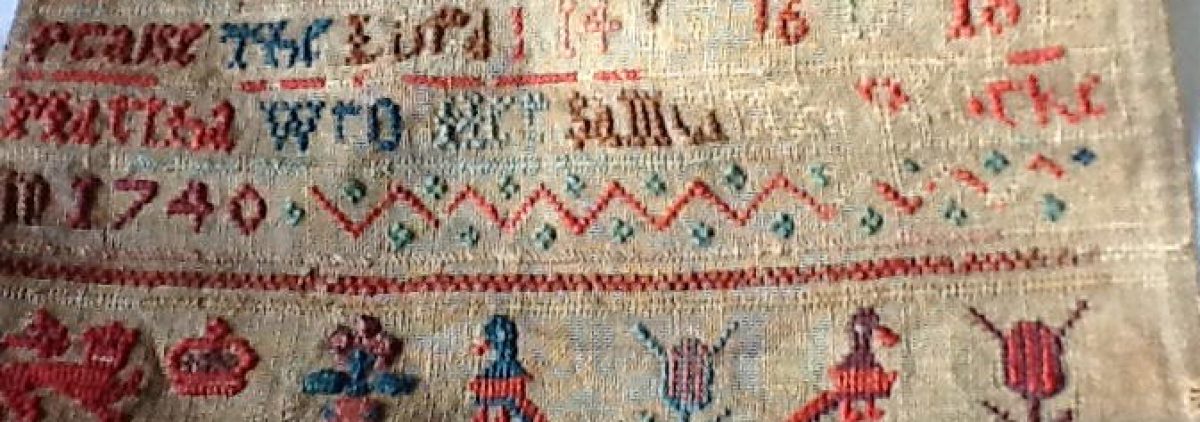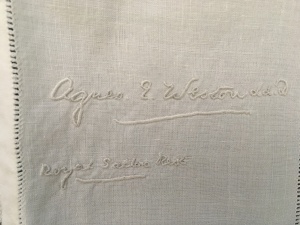International Women’s Day on Sunday 8 March prompted me to think about ways in which family historians can find out about their female ancestors. Women often disappear from formal records – and their stories remain often untold yet they often lead complex and varied lives. Not all records are on paper!
As a textile artist and someone who has an interest in historic textiles, I find that women’s stories can be quite often tied up in family textile heirlooms. One of the most interesting collections of published material about women is the documenting of quilt history. In the USA, around the time of the Bicentennial, this began with the Quilt Index – which can be found here.
In the US, many states recorded and published their own special quilt history and with it, the stories of the pioneer women who had made them. Historic quilt documentation is a very different way to understand the early pioneer experience of women and the story often begins in their home countries before they even set foot on American soil.

In Australia, the National Quilt Register is now hosted by the National Wool Museum, Geelong but began life as a project as part of the Pioneer Women’s Hut Museum in Tumbarumba, NSW. Quilts tell the story of their makers and those stories are collected on the registery – it’s worth a look to see if your family’s quilts are there. The Pioneer Women’s Hut Museum is well worth a visit to gain some understanding of the lives of women in rural Australia.
Not all quilts stay with the family – one quilt historian relates the tale of finding the most exquisite velvet and brocade quilt on the street as it had been consigned to the rubbish. She beat the garbage collectors to it with minutes to spare and saved a beautiful piece from permanent loss!

The header picture to this blog is an image of the remains of a child’s embroidery sampler dated 1740. At one point, it was deemed beyond (and not worth) saving by a retail picture framer and was to be consigned to the rag bag, but I intervened and today it lies in a nice safe museum standard storage box. It’s story is complex and I’m still not entirely sure as to which one of my Banks antecedents was responsible, but it was deemed important enough for it to accompany the family when they relocated from Liverpool to New Zealand and then to Australia in the mid 1800’s.
Antique shops, charity and Op shops and of course, garage sales can hide the secret women’s history on their shelves and in broken boxes. A fashion in quilts and embroidery and, later, as a fundraising idea, the embroidered piece made by a collective of women, whether family or friends tells its own story of place and time as well as documenting the fashionable colours, types of fabrics in vogue and relative skills of the makers.
What story had this wonderful white linen and lace tablecloth to tell? Rescued from a garage sale, I couldn’t let it go to waste or to someone who might not appreciate the story it hides. Dated in 1903, it features a group of seemingly unrelated embroidered names. It’s a project for a rainy day to photograph all the signature blocks and write a full description of the piece and cast the results into the ether as a resource for others with which to connect. If you have an Alice E Weston in your family or perhaps you know where the Royal Sailors Rest is, please get in touch!
Signature (or shilling) quilts were widely used as fund raising mechanisms during the First World War. Historical societies are often the repositories of such items and are worth checking in your local area for the names found thereon. This WW1 quilt is housed in Williamstown Historical Society Museum in Melbourne and there’s lots of names to be found here! Church groups also used the signature quilt as a means of fund raising – this example from the Heidelberg Scots Church dates from 1895/96 and the Society is looking to identify relatives of signatories.
I have the privilege to be the current custodian of the family Honiton lace bridal veil (more of the story here and here). I know that my grandmother wore it at her wedding and just recently, I discovered a wedding description of a relative which included a comment that she wore a Honiton lace veil loaned to her by a cousin. Given the time frame (1920’s) and the image accompanying the report in the Table Talk newspaper, I believe this is the first time I have found a reference to the use of the veil by someone other than my grandmother.
Little clues like these about a family heirloom can build more of a background to the lives of those women, and the ties and relationships that bind and build a family history.




